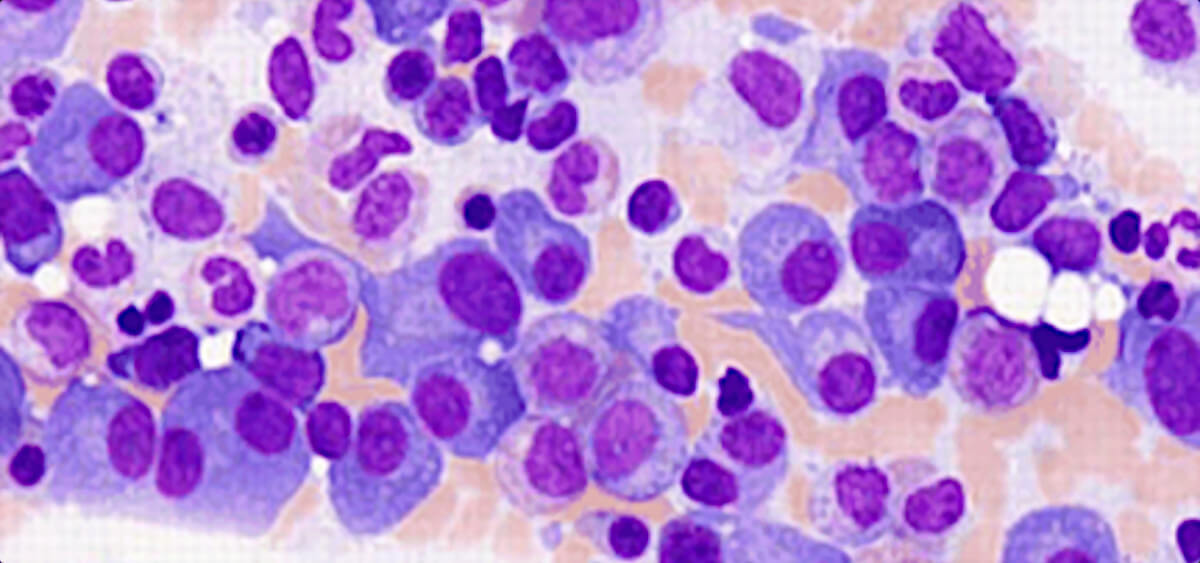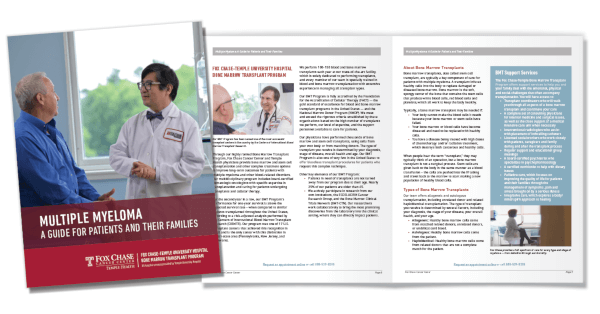Treatment for multiple myeloma depends on the stage and aggressiveness of the individual’s disease, as well as their age, health history, and personal goals.
At Fox Chase, we strive to treat our patients in the least invasive way possible—with combination therapies that give you the best chance of a successful outcome.
Primary Treatment of Multiple Myeloma
Induction
This stage is considered initial therapy and typically includes targeted therapies. In recent years, novel therapies (immunomodulatory agents, proteasome inhibitors, and monoclonal antibodies) have increasingly replaced cytotoxic chemotherapy as the main treatment for multiple myeloma. These therapies spare normal tissues from damage and are more effective at eliminating cancer cells.
Many patients respond well to this treatment. Our specialists follow patients’ blood counts and track the status of their disease based on the amount of abnormal protein found in their blood or urine.
Consolidation
Although the induction treatment is effective at killing sensitive myeloma cells, it’s very common for some resistant cells to linger in the bone marrow. After patients have responded well to initial therapy, consolidation treatment is used to trigger an even better response. This is done through a single course of very high-dose chemotherapy and a stem cell transplant, which rescues the patient’s blood counts and replaces diseased or damaged bone marrow.
Multiple studies have shown that patients stay in remission longer and have more durable responses with this approach. Stem cell transplants are also a key treatment option for relapsed and refractory multiple myeloma (which has either come back after previous treatment or did not respond to previous treatment at all).
The Fox Chase-Temple University Hospital Bone Marrow Transplant Program is a national leader in performing transplants for patients with multiple myeloma and other blood cancers. Our clinicians perform a large number of transplants per year and are recognized regularly for their expertise and patient outcomes.
After the stem cell transplant, patients usually undergo a few additional chemotherapy cycles and convert to maintenance therapy afterward. With this intense consolidation treatment, many patients have no lingering signs of multiple myeloma.
Maintenance
After treatment, patients may switch to maintenance therapy, which usually consists of one drug that patients will stay on indefinitely as long as it continues to keep their disease under control.
Clinical Trials for Myeloma
For patients with relapsed or refractory disease (which has either come back after previous treatment or did not respond to previous treatment at all), clinical trials are often recommended.
In the absence of an appropriate clinical trial, chemotherapy, immunotherapy, or another stem cell transplant may be used if a patient’s disease comes back or does not respond to their original treatment regimen.





